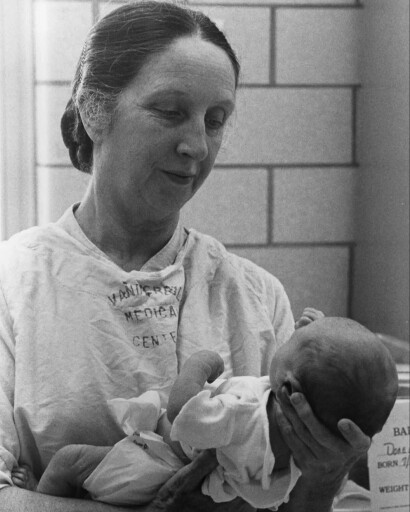
Mildred Thornton Stahlman, Pioneer in Neonatal Care, developed one of the first modern intensive care units for premature babies, helping newborns to breathe with lifesaving new treatments. In the 1960s, Dr. Mildred Stahlman saved 11 of 26 babies who had respiratory disease by pioneering the use of mini-iron lung machines. Dr. Mildred Thornton Stahlman, a Vanderbilt University pediatrician whose research on fatal lung disease in newborns led to lifesaving treatments and to the creation, in 1961, of one of the first neonatal intensive care units.
On Oct. 31, 1961, Dr. Stahlman fitted a premature baby who was gasping for breath into a miniature iron lung machine, (also known as a negative pressure ventilator), the kind used for children with polio. The machine worked by pulling the baby’s frail chest muscles open to help draw in air. The baby survived. That initial success, along with findings from Dr. Stahlman’s studies on newborn lambs, helped launch a new era of treating respiratory lung disease, a leading killer of premature babies. Immature lungs lack surfactant, a soapy chemical that coats air sacs. Without surfactant, the tiny sacs collapse. Shortly after her first success, Dr. Stahlman reported that she used the iron lung machine to save 11 of 26 babies. By the 1970s, negative pressure tanks were jettisoned for positive pressure machines that worked by inflating the lungs. In the 1990s, the use of surfactants extracted from animal lungs dramatically improved the survival of babies with severe disease who required mechanical ventilation. “Milly was one of the first to push the limits of viability of premature infants in a careful and scientific way,” said Dr. Linda Mayes, a Yale professor of child psychiatry, pediatrics and psychology and chair of the Yale Child Study Center who trained under Dr. Stahlman. “She was a physician-scientist long before that phrase was popular.” In the early days of neonatology, Dr. Stahlman was one of the few doctors in the world who knew how to thread tiny catheters into the umbilical vessels of newborns to monitor blood oxygen, wrote Sarah DiGregorio in her book, “Early: An Intimate History of Premature Birth and What It Teaches Us about Being Human.” The procedure was vital to ensuring enough oxygen to keep the babies alive but not so much that it might trigger blindness.
Dr. Stahlman, a tiny, daunting woman with piercing blue eyes and a tight bun, was known for her fierce dedication to her patients and to her students. Many of her students remember the so-called Milly rounds, when they visited each newborn on the wards and were expected to know every detail of every baby, from precise laboratory values to the family’s home life. “Her rigor was shocking to the mostly male staff, especially coming from a woman who was barely five feet tall and 90 pounds,” said Dr. Elizabeth Perkett, a retired professor of pediatric pulmonology at Vanderbilt University and the University of New Mexico. Dr. Stahlman’s research also included studying normal and abnormal lung physiology in newborn lambs. For a time, pregnant ewes grazed in a Vanderbilt courtyard. “She was struck by the fact that some babies who were close to term, not premature, had hyaline membrane disease,” the former name for respiratory distress syndrome, said Dr. Hakan Sundell, a Vanderbilt University professor emeritus of pediatrics and director of the animal laboratory. In 1973, Dr. Stahlman initiated an outreach program, training nurses in rural areas and overseeing the creation of a mobile health van that stabilized babies traveling from community hospitals to Vanderbilt. A former bread truck was refitted with a ventilator, monitors and warming lights. Within a year, newborn deaths dropped 24 percent, her team reported in the February 1979 issue of the Southern Medical Journal. Dr. Stahlman also pioneered follow-up therapy for premature babies, checking on them into toddlerhood to monitor psychological and physical development. “She led the way in research and innovation, and she was also very farsighted, understanding the ethical issues and the limits of technology,” said Dr. Pradeep N. Mally, the chief of the division of neonatology at NYU Langone Health and a neonatologist at Hassenfeld Children’s Hospital at NYU Langone.
Today, Martha Lott, the first baby Dr. Stahlman fitted into the iron lung machine, is a nurse in the very place where her life was saved. “I knew the story and I was tested for years,” said Ms. Lott. Dr. Stahlman was her Godmother, she said. “I think they assumed I would have issues,” related to the daring treatment. She did not. “It’s amazing,” she added, “how much technology has changed in the last 60 years.
Memorials can be made to the Monroe Carell Jr. Children’s Hospital in Dr. Mildred Stahlman’s memory.
There are no services schedules at this time.
WILLIAMSON MEMORIAL FUNERAL HOME is honored to serve the Mildred Stahlman family.

